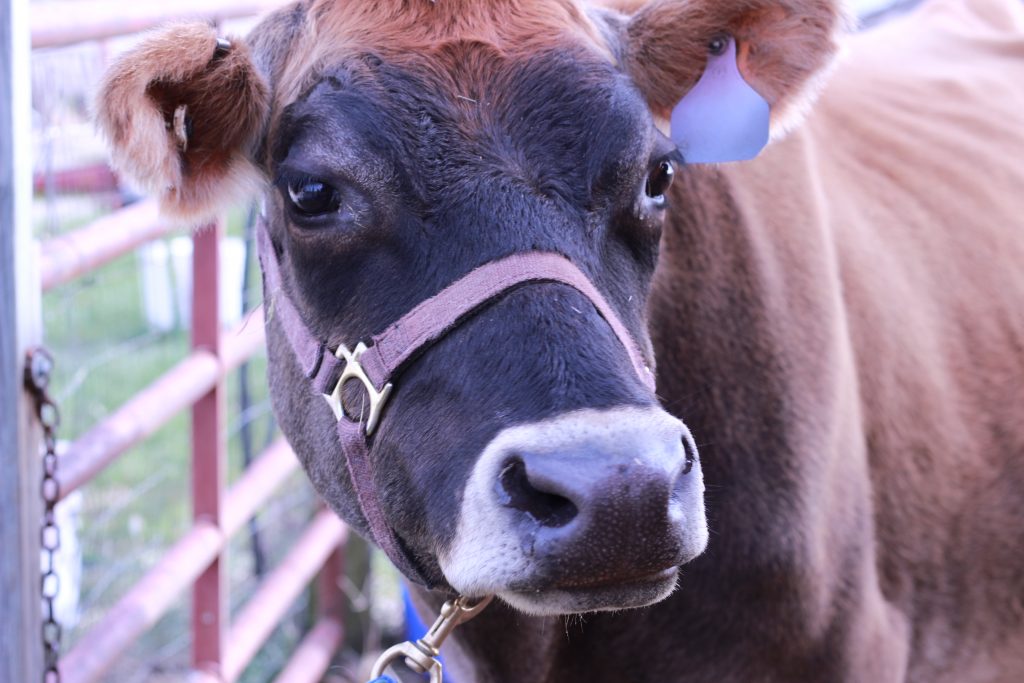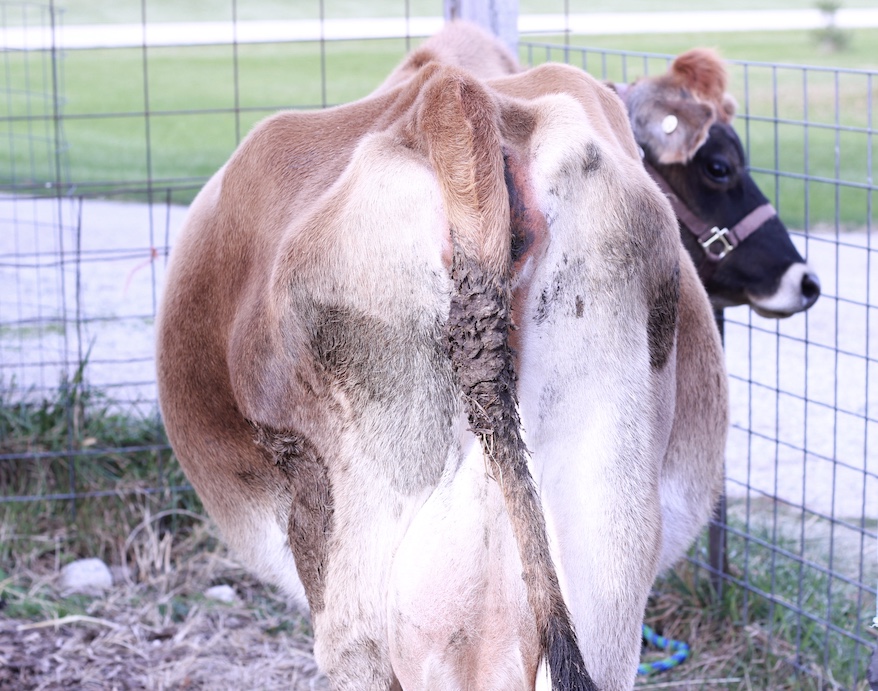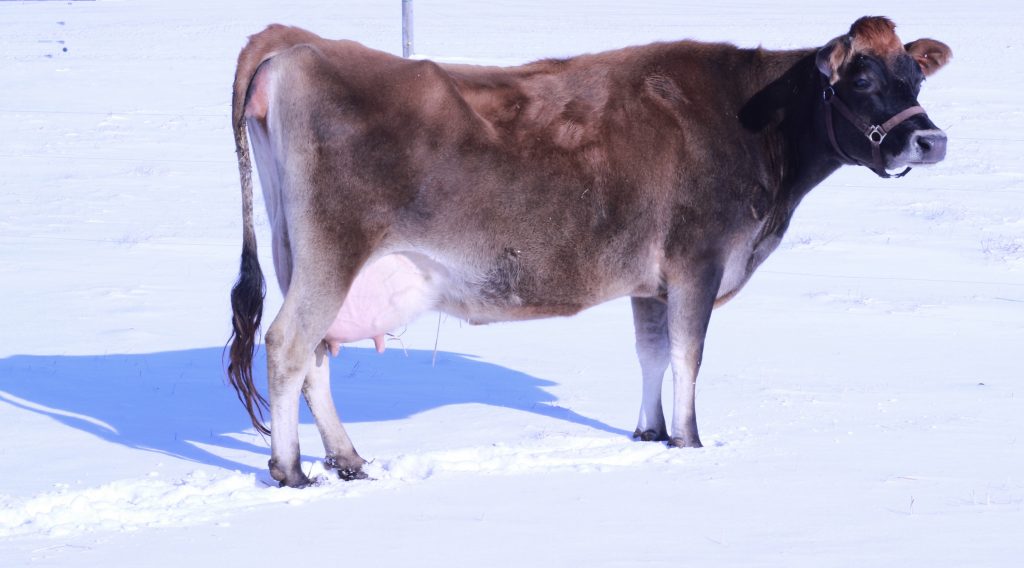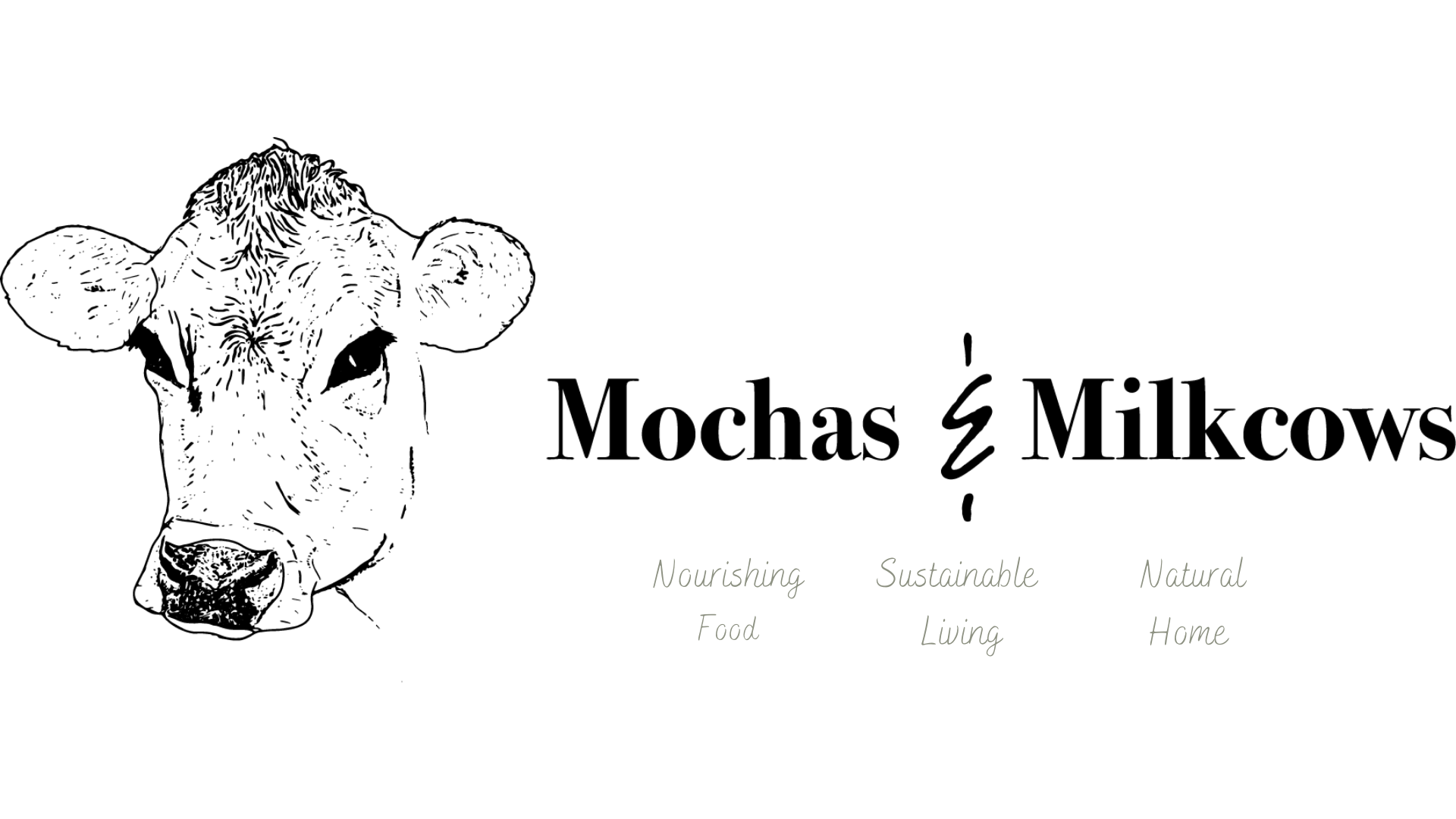The realities of owning a milk cow are just that. Real. There is so much that has to happen “behind the scenes” when you own a milk cow. When I was researching a family milk cow to add to our expanding homestead, I did not run across any type of “real” info. I wish I had been able to read something outlining exactly what to expect taking on this new endeavor. It would not have changed my mind, but it would have prepared me a little better for what was going to happen.
So You Want a Family Milk Cow
When I first thought about owning a family milk cow, I knew it would be a huge commitment. HUGE. My mom has had a dairy goat herd for over a decade, and I knew from her life that things change drastically when you take on an animal for milking purposes. No overnights, let alone a weekend away. You don’t sleep in. You have to make sure you are sticking to the same routine, day in and day out to run a successful home dairy system. Not to mention the financial side of taking on dairy animals. Animals have to eat. Dairy animals have to eat a lot due to their milk production! Dairy cows are producing an enormous amount of milk and that means a massive energy output. Feeding the dairy cow enough feed is vital to their health and well-being as well as keeping them in milk.
What to Consider First
Before anyone purchases a family milk cow, I have come up with some things to consider first. These will make the decision making process easier and will also help you decide what kind of family milk cow is best for your homestead.
- What breed will work best for you?
- What will the purpose of your milk cow be? All dairy products? Some?
- What age cow do you want? Seasoned or first time milk cow?
- What housing do you have available?
- Where will you milk?
- What kind of pasture area do you have?
- How will you fit a dairy cow into your lifestyle?
Choosing a Breed
There are several breeds of milk cows to consider for a family homestead. Some of the more familiar ones are Brown Swiss, Jersey, Holstein. These are all full size milk cows and will produce accordingly. If you are a large family and are wanting to make all of your dairy products at home, a full size cow may be the best choice for you. Personally, I chose a Jersey for our family milk cow. She is a very high producer too, so we are easily able to get 3+ gallons a day while also calf-sharing on her. Keep in mind, between the 3 breeds above, the Holstein is a much larger cow than the other two. This matters when you go about calculating the amount of pasture/hay you will need to feed your cow.
Some people prefer to have a small family milk cow, such as a Dexter or American Milking Devon. You will get less milk but also a smaller feed bill. A small family would do well with a breed like one mentioned above. These cows won’t need to eat as much due to the size and will still give you plenty of milk. Typically, these smaller breeds will still provide 1-3 gallons a day total, depending on factors such as calf sharing, 1 or 2 milkings per day and feed type.

Housing the Cow & Pasture Area
These two factors are huge. If you live anywhere that will get winter temps/snow, you need to have some sort of shelter for your cow. You cannot have a cow just outside year round by itself (or with a young calf) in inclement weather. Make sure you have a shelter area or solid plans for one before you purchase a milk cow. Keep in mind milk cows are NOT beef cows. Milk cows cannot handle near as much as beef cows. They are tolerant to some weather, but while in milk the cow is focused on producing and all the energy is going toward that milk production, not heat production.
Cows also need to eat. A lot. Make sure you can provide either adequate pasture area or have a source of quality hay to feed your milk cow. We have just over an acre fenced in for our milk cow, but she only utilizes that area during the summer months. Otherwise we feed hay. She still gets some alfalfa hay during the summer as well since she is such a high producer. She needs the extra protein and calories to keep her in good health. Watch videos, read articles, do your research on how much a cow eats. The YouTuber “Just A Few Acres” has some great info on different calculations to do when determining pasture needs. During the winter months we calculate how much hay we need based upon approximately 3% body weight being eaten each day. You can determine your needs with your own milk cow’s weight.
Age of Cow
If you are just starting out with livestock on your homestead, base your decision on what you are comfortable with for your first milk cow. If you have never been around cows before or milked an animal, find somewhere you can observe and possibly help out first. You need to have a basic understanding of what the process is like. Cows are large (even small breeds) and therefore, can do harm if they decide to. I have been shoved against a wall before by my own milk cow and let’s say I am well aware how strong she is. Buying a cow that has been milked for a few years already is a better way to start than getting a first time milker and trying to break her in. My milk cow was pregnant with her 3rd calf when we bought her and she was used to the milking routine.
Milking Area
Where will you milk your cow? Out in the pasture? On a milk stand? In her pen/barn stall? These are things you need to think about and have planned before getting a cow. Find out if your potential milk cow is used to being hand milked or machine milked. Machine milking requires electricity. I would suggest a milk stand to make it easier to put on inflations. Hand milking gives much more flexibility and doesn’t require anything other than a bucket and your hands. Personally, we chose machine milking for several reasons. First, our cow came from a small family dairy that only machine milked. Second, she is a member of the “itty bitty titty club”. I attempted hand milking. It did not work. I’ll explain the final decision factor in the next section.
Routine
Milk cows are huge on routine. Huge. It is imperative that you be able to create a solid routine and stick to it. That means no skipping a milking. Ever. Mastitis can happen if you don’t milk about every 12 hours. When you get further into the milking months it is possible to drop down to once a day milking or you can choose calf-sharing in the beginning. However, if you aren’t doing either of those, you absolutely must milk two times a day, approximately 12 hours apart. I say approximately only because a small shift of 15-30 minutes here and there won’t cause a big disruption in milk supply. However, some cows know their internal clocks better than technology and will be waiting at 12 hours on the dot for milking time. Be prepared.
Messes
I need to make this as real and transparent as possible. Cows crap a TON! Anytime, anywhere. They literally do. not. care. This is the most important reason why we chose machine milking. The first time Lucy peed and pooped during milking was horrific. Imagine sitting there and then being splashed and splattered with a cow’s bodily fluids. Talk about disgusting. This happened several times during milking. I thought it was from stress after moving. After the vet came to check on Lucy, we learned that this is a very common occurrence. That information was disappointing. Machine milking was the right choice for us. This keeps the milk completely enclosed. Since we drink the milk raw and make most dairy products raw, it is of utmost important to keep everything sanitary. A closed system machine makes it much easier to keep the milk clean and safe to drink raw.

Work
Owning a family milk cow is hard work. Constant, no breaks allowed, work. I don’t say this to scare anyone or make anyone feel like they can’t handle it. If you want a milk cow, put your mind to it and get one! I only say these things because I see too many people talk about homesteading and getting all the livestock yet not truly understanding the amount of effort it takes. Livestock do not care if it’s subzero temps outside. They still need water and food. It does not matter to your milk cow that you are puking your guts up and feel awful. She still needs milked out or you will have even bigger issues. Life changes with a milk cow. Accept that reality BEFORE you venture into this realm. The last thing you, or the cow, needs is to start out with a milk cow and then change your mind 6 months later. The realities of owning a milk cow are not all sunshine and rainbows. It’s hard work, you will be exhausted. You will get ticked. You will question your sanity. But you will also be rewarded day in and day out with fresh, delicious raw milk that you only had to walk out to your family milk cow to get. That, my friends, is worth every bit of sweat and tears.

Owning a Cow
The realities of owning a milk cow are completely worth it to us. Yes, it can be frustrating and messy. However, walking back to our milk fridge and grabbing milk anytime we want is so satisfying. We know the amount of work put into every gallon we receive. We also know that the cow producing our milk is fed well, housed well and allowed to live her best life with us. When we think about all the positive aspects of having our own milk cow, they far outweigh any negative.
So do you have a family milk cow? Want one? Tell me in the comments! I’d love to hear your experiences if you have your own!


Leave a Reply